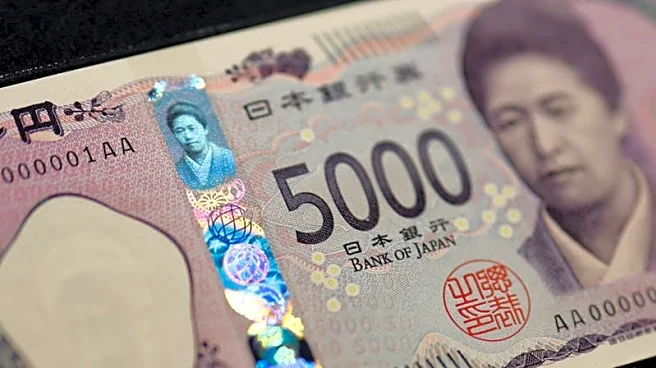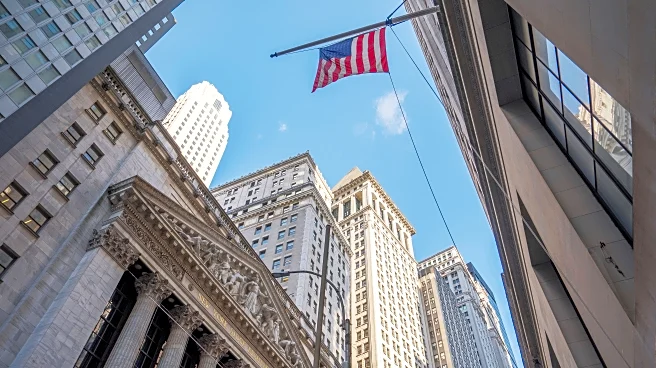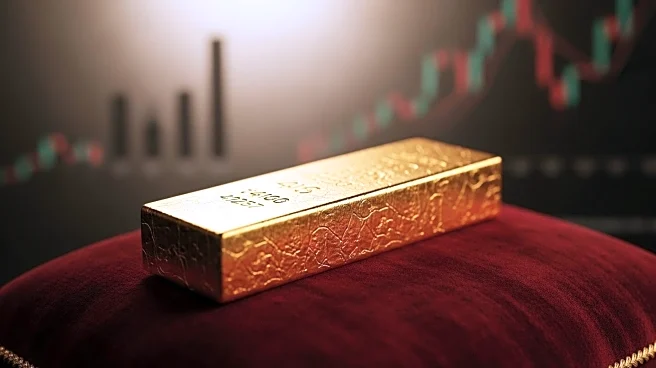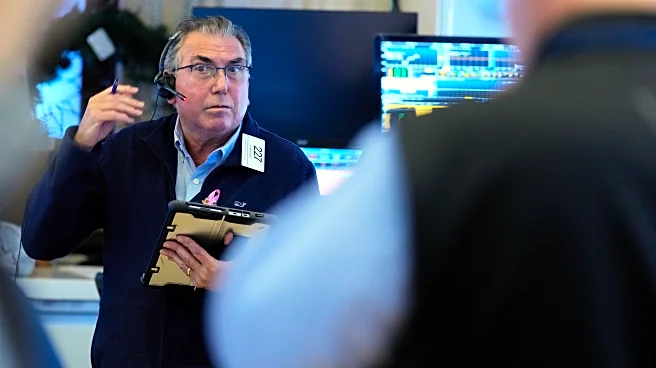What is the story about?
What's Happening?
Gold prices have reached a historic high of $4,000 per ounce, driven by strong investment demand amid geopolitical and economic uncertainty. The surge is attributed to several factors, including sizable central bank purchases, increased demand for gold-backed exchange-traded funds, and a weaker U.S. dollar. Investors are turning to gold as a hedge against inflation and economic instability, particularly as the Federal Reserve is expected to cut interest rates further. The government shutdown has left traders without federal data, forcing reliance on secondary sources to predict Fed actions. Goldman Sachs has raised its gold price forecast, and China continues to add gold to its reserves.
Why It's Important?
The rise in gold prices reflects broader economic concerns, including the depreciation of the U.S. dollar and geopolitical tensions. As investors seek to de-risk their portfolios, gold is seen as a safer asset compared to the dollar. This shift could have significant implications for U.S. economic policy and global trade dynamics. The increased demand for gold may influence central bank strategies and impact inflation rates. Retail investors and financial institutions are closely monitoring these developments, which could affect investment strategies and economic forecasts.
What's Next?
Markets are anticipating further interest rate cuts by the Federal Reserve, with meetings scheduled for late October and December. These cuts could continue to drive gold prices higher, as lower interest rates make gold more attractive compared to debt instruments. Investors and policymakers will be watching for key inflation figures and other economic indicators to assess the impact of these developments. The ongoing government shutdown may further complicate economic predictions and policy decisions.
Beyond the Headlines
The shift towards gold as a preferred investment highlights concerns about U.S. sovereign risk and the stability of traditional financial instruments. This trend may lead to long-term changes in investment strategies and economic policies, as countries and investors seek alternatives to the dollar. The ethical and cultural implications of this shift, particularly in terms of global trade relations and economic equity, warrant further examination.
AI Generated Content
Do you find this article useful?














